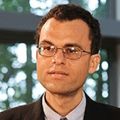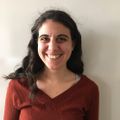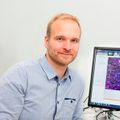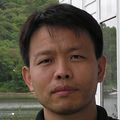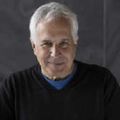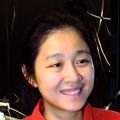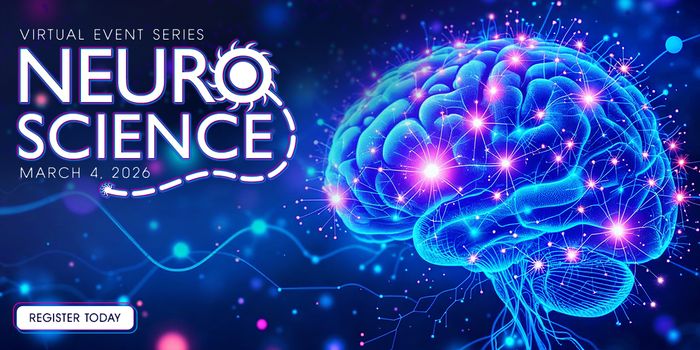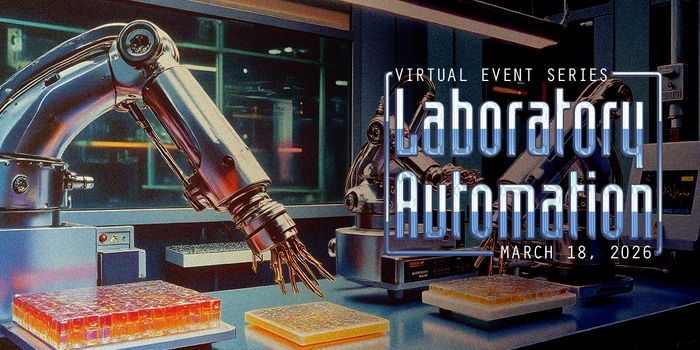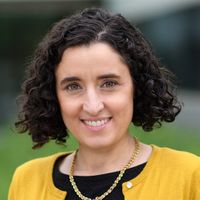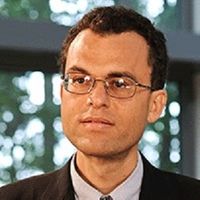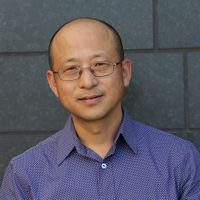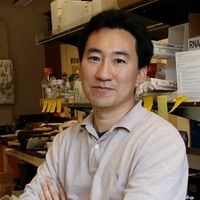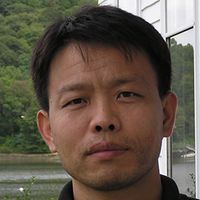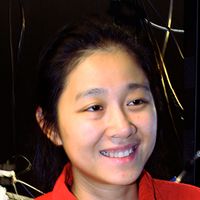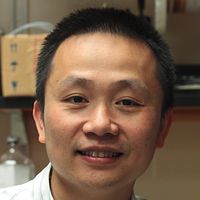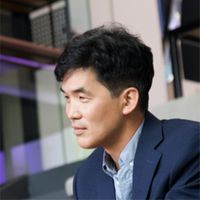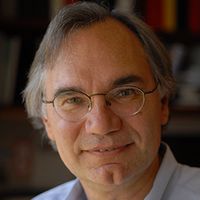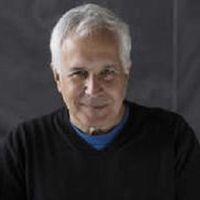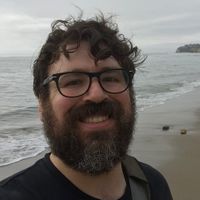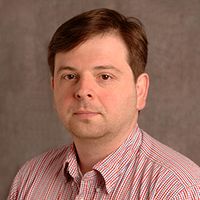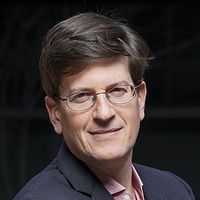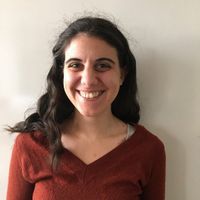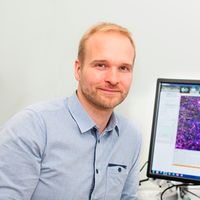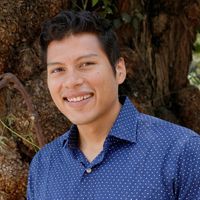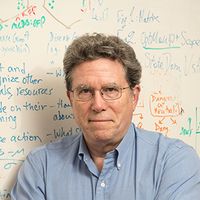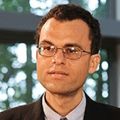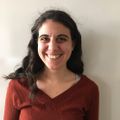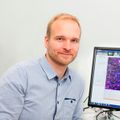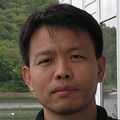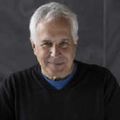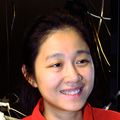ZEISS Microscopy is the world's only one-stop manufacturer of light, electron, X-ray and ion microscope systems and offers solutions for correlative microscopy. The portfolio comprises of products and services for life sciences, materials and industrial research, as well as ...
See more-
ManuscriptEdit
Manuscriptedit specializes in providing services in Scientific & English editing, proofreading, medical writing, academic writing, formatting and publication support. Within a short span of time, the company has grown rapidly to be counted among the world's leading service ...
See more -
Sartorius
The Sartorius Group is a leading international partner of biopharmaceutical research and the industry. With innovative laboratory instruments and consumables, the Group's Lab Products & Services Division concentrates on serving the needs of laboratories performing research and ...
See more -
Molecular Devices
From our scientists and engineers to our service and support teams, we're passionate about equipping researchers with next-generation technology that advances scientific discovery. Our customers are at the heart of all we do, inspiring innovative solutions that unravel the ...
See more -
Miltenyi Biotec
For over 30 years, Miltenyi Biotec has been a leader in the development of products that empower the advancement of biomedical research and enable cell and gene therapy. We provide innovative tools to help with your sample preparation, cell isolation, cell culture, and cell ...
See more -
LI-COR Biosciences
LI-COR first introduced scientific instruments for plant science research and quickly grew to provide scientists tools for such diverse disciplines as atmospheric research and the study of how proteins interact at the cellular level. LI-COR Biosciences is a global leader in the ...
See more -
NanoString Technologies
NanoString Technologies (NASDAQ: NSTG) is a publicly held provider of life science tools for translational research and molecular diagnostics. The company's technology enables a wide variety of basic research, translational medicine and in vitro diagnostics applications ...
See more -
Envigo
Envigo provides the broadest range of research models and related services to the pharmaceutical and biotechnology industries, government, academia, and other life science organizations. As the largest organization that is solely dedicated to providing research models and related ...
See more -
Atlas Antibodies
Atlas Antibodies is a Swedish biotechnology company driving leading research worldwide through providing affinity-purified monoclonal and polyclonal antibodies, and control antigens. Our product portfolio extensively covers human proteins in cells, tissues, and organs. With our ...
See more -
StressMarq Biosciences
StressMarq Biosciences is a life sciences company with a diverse portfolio of primary antibodies, proteins, immunoassay kits and small molecules for scientific research in areas including cancer research, cardiovascular disease, cell signaling and neuroscience. StressMarq has ...
See more
Neuroscience Virtual Event Series 2020


Labroots is excited to present the 8th annual event in the Neuroscience Virtual Event Series. This distinguished, online-only, event is free to attend and brings together the neuroscience community to discuss and present the newest advances in understanding the human brain, neuropsychiatric disorders, and behavorial processes as it relates to the brain function.
The theme for this years event is Brain Function: In Health and In Disease and includes the following tracks and topics:
NIH BRAIN Initiative: A Multidisciplinary Approach to Neuroscience >>
- Cell Type Diversity
- Tool Development
- Advancing Human Neuroscience
- Early Career BRAIN Scientists
- Understanding Circuits and Behavior
Understanding the Scourge of Neurodegenerative Diseases and Dementia >>
- Alzheimer’s Disease
- Parkinson’s Disease
- Neuroprotective agents and their role in ND
Behavioral and Psychiatric Disorders >>
- Autism Spectrum Disorder
- Schizophrenia
- Depression
Our virtual conference allows you to participate in a global setting with no travel or cost to you. The event will remain open 6 months from the date of the live event. The webinars will be available for unlimited on-demand viewing.
Continuing Education
LabRoots is approved as a provider of continuing education programs in the clinical laboratory sciences by the ASCLS P.A.C.E. ® Program. By attending this event, you can earn 1 Continuing Education credit per presentation for a maximum of 40 credits.
Use #LRneuro to follow the conversation!
Presentations Share
Starting in 2020, LabRoots is introducing our new agenda format. We will be offering a full agenda of scheduled presentations throughout the day of the event; including Keynotes, Panels and Sponsored speakers. We will also be offering unlimited presentations available for immediate On-Demand viewing when the doors to our virtual event open. The content of our presentations will be delivered by experts in industry and academia. We hope you enjoy our new format!
-
MAR 11, 2020 3:00 PM PDT
PANEL: A Team Multi-Disciplinary Approach to Understanding the Neural Circuit Dynamics Underlying Working Memory and Decision-Making
Carlos Brody, PhDWilbur H. Gantz III '59 Professor of Neuroscience, Prin...Ben Engelhard, PhDPost Doctoral Research Associate, Princeton Neuroscienc...Stephen Keeley, PhDPost Doctoral Research Associate, Princeton Neuroscienc...Marlies Oostland, PhDMarie Skłodowska-Curie Fellow in the labs of Prof. Sam...Lucas Pinto, MD, PhDPost Doctoral Research Associate, Princeton Neuroscienc...Adrian Wanner, PhDCV Starr Fellow at Princeton UniversityIlana Witten, PhDAssociate Professor of Psychology and Neuroscience, Pri... -
MAR 11, 2020 3:00 PM PDT
PANEL: Anatomical Characterization of Neuron Cell Types in the Mouse Brain
Giorgio Ascoli, PhDUniversity Professor, Bioengineering Department, Volgen...Hong-Wei Dong, MD, PhDProfessor of Neurology, Physiology & Neuroscience, Dire...Byungkook Lim, PhDAssistant Professor, Division of Biological Sciences, N... -
MAR 11, 2020 1:30 PM PDT
Examining the effects of sonication on alpha synuclein pre-formed fibrils (PFFs)
-
MAR 11, 2020 1:30 PM PDT
PANEL: Dissecting the circuit logics in the amygdala underlying emotional learning (copy)
Bo LiProfessor of Neuroscience, Cold Spring Harbor Laborator...Tianyi MaoAssociate Professor, Vollum Institute, Oregon Health an...Haining ZhongScientist/Associate Professor, Vollum Institute, Oregon... -
MAR 11, 2020 1:30 PM PDT
PANEL: Dissecting the circuit logics in the amygdala underlying emotional learning
Bo LiProfessor of Neuroscience, Cold Spring Harbor Laborator...Tianyi MaoAssociate Professor, Vollum Institute, Oregon Health an...Haining ZhongScientist/Associate Professor, Vollum Institute, Oregon... -
MAR 11, 2020 1:30 PM PDT
PANEL: The Neuronal Mechanisms of Human Episodic Memory: a Multidisciplinary Consortium Utilizing Human Single-Neuron Recordings
Adam Mamelak, MDProfessor of Neurosurgery, Director of Epilepsy and Fun...Ueli Rutishauser, PhDBoard of Governors Chair in Neuroscience, Director, Hum...Gabriel Kreiman, PhDProfessor at Harvard Medical School and Children's Hosp...Jie Zheng, PhDAssistant Professor, Neurological Surgery and Biomedica... -
MAR 11, 2020 12:00 PM PDT
PANEL: A Neuroscience-Based Approach to Restoration of Sensorimotor Function After Spinal Cord Injury
Robert Gaunt, PhDAssistant Professor, Rehab Neural Engineering Labs, Uni...Michael Boninger, MDTenured Professor & UPMC Endowed Vice Chair, Department...Jennifer Collinger, PhDAssistant Professor, Department of Physical Medicine an... -
MAR 11, 2020 12:00 PM PDT
PANEL: Cracking a Neural Circuit's Function Through High-Resolution Physiology, Connectomics, and Computational Modeling
Emre Aksay, PhDAssociate Professor of Computational Neuroscience in th...Mark Goldman, PhDJoel Keizer Chair in Theoretical and Computational Biol...Sebastian Seung, PhDAnthony B. Evnin Professor in the Neuroscience Institut...Ashwin Vishwanathan, PhDResearch Associate at the Princeton Neuroscience Instit... -
MAR 11, 2020 12:00 PM PDT
PANEL: Thought to action: developing brain machine interfaces to assist individuals with paralysis
Tyson Aflalo, PhDMember of Professional Staff, Executive Director, T&C B...Richard A. Andersen, PhDJames G. Boswell Professor of Neuroscience,T&C Chen Bra...Spencer Kellis, PhDMember of Professional Staff, Director of Engineering,...Charles Liu, MD, PhDProfessor of Neurosurgery, Director of the USC Neurores... -
MAR 11, 2020 10:30 AM PDT
Innate immunity in chronic neurodegeneration
Michael T. Heneka, PhD
Director of the Department of Neurodegenerative Diseases and Gerontopsychiatry at the University of Bonn, GermanyBIOGRAPHYSponsored By: NanoString Technologies -
MAR 11, 2020 10:30 AM PDT
PANEL: Deep Brain Stimulation for Depression Using Directional Current Steering and Individualized Network Targeting
Wayne Goodman, MDD.C and Irene Ellwood Professor and Chair of the Mennin...Nader Pouratian, MD, PhDProfessor of Neurosurgery and Radiation Oncology and af...Sameer Anil Sheth, MD, PhDAssociate Professor, Vice-Chair of Clinical Research, N... -
MAR 11, 2020 10:30 AM PDT
PANEL: The Berghia Brain Project: A Team Approach to Understanding Whole-Brain Control of State-Dependent, Motivated Behaviors
Paul Katz, PhDProfessor and Director of Neurosciences, Neuroscience &...Jeff Lichtman, MD, PhDJeremy R. Knowles Professor of Molecular and Cellular B...William Frost, PhDDirector of the Center for Brain Function and Repair an...Deidre Lyons, PhDAssistant Professor at the University of California San...Vince Lyzinski, PhD, B.Sc, M.Sc, M.Sc.E.Assistant Professor at the University of Maryland in th... -
MAR 11, 2020 9:00 AM PDT
Keynote Presentation: The BRAIN Initiative and its Promise for the Treatment of Neuro/Mental/Substance Abuse Disorders
Walter Koroshetz, MD
Director of the National Institute of Neurological Disorders and Stroke (NINDS), National Institutes of HealthBIOGRAPHY -
MAR 11, 2020 9:00 AM PDT
PANEL: Neural circuit mechanisms of memory replay
György Buzsáki, PhDBiggs Professor of Neuroscience, NYU School of MedicineAttila LosonczyProfessor of Neuroscience in the Mortimer B. Zuckerman...Mark J. SchnitzerProfessor, Departments of Biology & Applied Physics Inv...Ivan SolteszProfessor, Stanford University -
MAR 11, 2020 7:30 AM PDT
Keynote Presentation: Interplay between LRRK2 protein kinase and Rab GTPases in Parkinson's disease
Dario Alessi, FRS FMedSci FRSE
Director, Professor of Signal Transduction, University of DundeeBIOGRAPHY -
MAR 11, 2020 7:30 AM PDT
PANEL: Neuronal Circuit Resilience - How the Brain Manages to Maintain Reliable Behaviors with Unreliable Neurons
Adrienne Fairhall, PhDProfessor in the Department of Physiology and Biophysic...Tim GardnerAssociate Professor and Robert and Leona Chair in Neuro...Carlos Lois, MD, PhDResearch Professor in Neurobiology at the Division of B... -
MAR 11, 2020 6:00 AM PDT
PANEL: Sensorimotor Processing, Decision Making, and Internal States: Towards a Realistic Multiscale Circuit Model of the Larval Zebrafish Brain
Florian Engert, PhDProfessor of Molecular and Cellular Biology, Harvard Un...Jeff Lichtman, MD, PhDJeremy R. Knowles Professor of Molecular and Cellular B...Haim SompolinskyProfessor of Physics and Neuroscience at Hebrew Univers... -
MAR 11, 2020 6:00 AM PDT
PANEL: The Neural Control of Locomotion, an Integrative Approach
Michael Dickinson, PhDAbe and Zarem Professor of Biology and Bioengineering,...Anthony Azevedo, PhDPost-doctoral Researcher, Department of Physiology and...Clare Howard, PhDMD/PhD Student, Columbia Vagelos College of Physicians...Luke BrezovecGraduate student, Wu Tsai Neurosciences Institute, Stan...Sasha RayshubskiyPost-doctoral associate, Department of Neurobiology, Ha...Emily PalmerGraduate Student, Graduate Aeronautics Laboratory, Cali... -
Acoustically Targeted Molecular Neuromodulation
Mikhail G. Shapiro, PhD
Professor of Chemical Engineering, Investigator, Heritage Medical Research Institute, California Institute of TechnologyBIOGRAPHY -
Bridging the translational gap in rodent behavioral testing using touchscreens and the MouseBytes Open science data repository
Marco A.M. Prado, Pharm, MSc, PhD
Canada Research Chair in Neurochemistry of Dementia; Scientist, Robarts Research Institute; Professor, Department of Physiology and Pharmacology and Department of Anatomy & Cell Biology, The University of Western Ontario; Deputy Editor in Chief, Journal of NeurochemistryBIOGRAPHY -
Deep brain Recording and Stimulation of Real World Episodic Memory in Humans
-
Ethical Challenges in Early Phase Brain Device Research
Lauren R. Sankary, JD, MA
Neuroethics Staff, Neurological Institute, Associate Director, Neuroethics Program, Center for Bioethics, Cleveland Clinic Center for BioethicsBIOGRAPHY -
Investigating Cerebellar Correlates of Autism in Model Mice
-
Investigating the roles of the Hsp90 co-chaperone, STI1, in neuronal resilience during aging
Rachel E. Lackie, HBSc.
PhD Candidate in Neuroscience, Robarts Research Institute, The University of Western OntarioBIOGRAPHY -
Multi-region Neural Network Models of Adaptive and Maladaptive Learning in the Brain
Kanaka Rajan, PhD
Assistant Professor, Department of Neuroscience & Friedman Brain Institute, Icahn School of Medicine at Mount SinaiBIOGRAPHY -
Neural Interfaces for Controlling Finger Movements
Cynthia Chestek, PhD
Associate Professor of Biomedical Engineering, Electrical Engineering, Neuroscience and Robotics, University of MichiganBIOGRAPHY -
Real-Time Monitoring of Striatal GPCR Mediated cAMP Signaling Using Genetically Encoded Fluorescent Sensors
-
Selective D4R Ligands Reveal Structure-Activity Relationships that Engender Agonist Efficacy
-
Sensing in a dynamic world: what the antennae of the fruit fly can teach us about sensation and the perception of movement
Marie P. Suver, PhD
Postdoctoral Fellow, NYU Neuroscience Institute, NYU Langone Medical CenterBIOGRAPHY -
TBD
David J. Anderson, PhD
Seymour Benzer Professor of Biology Director, Tianqiao and Chrissy Chen Institute for Neuroscience, Investigator, HHMIBIOGRAPHY
- Understanding the Scourge of Neurodegenerative Diseases and Dementia
-
Bridging the translational gap in rodent behavioral testing using touchscreens and the MouseBytes Open science data repository
Marco A.M. Prado, Pharm, MSc, PhD
Canada Research Chair in Neurochemistry of Dementia; Scientist, Robarts Research Institute; Professor, Department of Physiology and Pharmacology and Department of Anatomy & Cell Biology, The University of Western Ontario; Deputy Editor in Chief, Journal of NeurochemistryBIOGRAPHY -
Investigating the roles of the Hsp90 co-chaperone, STI1, in neuronal resilience during aging
Rachel E. Lackie, HBSc.
PhD Candidate in Neuroscience, Robarts Research Institute, The University of Western OntarioBIOGRAPHY -
MAR 11, 2020 7:30 AM PDT
Keynote Presentation: Interplay between LRRK2 protein kinase and Rab GTPases in Parkinson's disease
Dario Alessi, FRS FMedSci FRSE
Director, Professor of Signal Transduction, University of DundeeBIOGRAPHY -
MAR 11, 2020 10:30 AM PDT
Innate immunity in chronic neurodegeneration
Michael T. Heneka, PhD
Director of the Department of Neurodegenerative Diseases and Gerontopsychiatry at the University of Bonn, GermanyBIOGRAPHYSponsored By: NanoString Technologies -
MAR 11, 2020 1:30 PM PDT
Examining the effects of sonication on alpha synuclein pre-formed fibrils (PFFs)
- Behavioral and Psychiatric Disorders
-
Investigating Cerebellar Correlates of Autism in Model Mice
-
Selective D4R Ligands Reveal Structure-Activity Relationships that Engender Agonist Efficacy
- NIH BRAIN Initiative: A Multidisciplinary Approach to Neuroscience
-
TBD
David J. Anderson, PhD
Seymour Benzer Professor of Biology Director, Tianqiao and Chrissy Chen Institute for Neuroscience, Investigator, HHMIBIOGRAPHY -
Multi-region Neural Network Models of Adaptive and Maladaptive Learning in the Brain
Kanaka Rajan, PhD
Assistant Professor, Department of Neuroscience & Friedman Brain Institute, Icahn School of Medicine at Mount SinaiBIOGRAPHY -
Deep brain Recording and Stimulation of Real World Episodic Memory in Humans
-
Ethical Challenges in Early Phase Brain Device Research
Lauren R. Sankary, JD, MA
Neuroethics Staff, Neurological Institute, Associate Director, Neuroethics Program, Center for Bioethics, Cleveland Clinic Center for BioethicsBIOGRAPHY -
Sensing in a dynamic world: what the antennae of the fruit fly can teach us about sensation and the perception of movement
Marie P. Suver, PhD
Postdoctoral Fellow, NYU Neuroscience Institute, NYU Langone Medical CenterBIOGRAPHY -
Neural Interfaces for Controlling Finger Movements
Cynthia Chestek, PhD
Associate Professor of Biomedical Engineering, Electrical Engineering, Neuroscience and Robotics, University of MichiganBIOGRAPHY -
Real-Time Monitoring of Striatal GPCR Mediated cAMP Signaling Using Genetically Encoded Fluorescent Sensors
-
Acoustically Targeted Molecular Neuromodulation
Mikhail G. Shapiro, PhD
Professor of Chemical Engineering, Investigator, Heritage Medical Research Institute, California Institute of TechnologyBIOGRAPHY -
MAR 11, 2020 9:00 AM PDT
Keynote Presentation: The BRAIN Initiative and its Promise for the Treatment of Neuro/Mental/Substance Abuse Disorders
Walter Koroshetz, MD
Director of the National Institute of Neurological Disorders and Stroke (NINDS), National Institutes of HealthBIOGRAPHY - Advancing Human Neuroscience
-
MAR 11, 2020 6:00 AM PDT
PANEL: The Neural Control of Locomotion, an Integrative Approach
Michael Dickinson, PhDAbe and Zarem Professor of Biology and Bioengineering,...Anthony Azevedo, PhDPost-doctoral Researcher, Department of Physiology and...Clare Howard, PhDMD/PhD Student, Columbia Vagelos College of Physicians...Luke BrezovecGraduate student, Wu Tsai Neurosciences Institute, Stan...Sasha RayshubskiyPost-doctoral associate, Department of Neurobiology, Ha...Emily PalmerGraduate Student, Graduate Aeronautics Laboratory, Cali... -
MAR 11, 2020 10:30 AM PDT
PANEL: Deep Brain Stimulation for Depression Using Directional Current Steering and Individualized Network Targeting
Wayne Goodman, MDD.C and Irene Ellwood Professor and Chair of the Mennin...Nader Pouratian, MD, PhDProfessor of Neurosurgery and Radiation Oncology and af...Sameer Anil Sheth, MD, PhDAssociate Professor, Vice-Chair of Clinical Research, N... -
MAR 11, 2020 12:00 PM PDT
PANEL: Cracking a Neural Circuit's Function Through High-Resolution Physiology, Connectomics, and Computational Modeling
Emre Aksay, PhDAssociate Professor of Computational Neuroscience in th...Mark Goldman, PhDJoel Keizer Chair in Theoretical and Computational Biol...Sebastian Seung, PhDAnthony B. Evnin Professor in the Neuroscience Institut...Ashwin Vishwanathan, PhDResearch Associate at the Princeton Neuroscience Instit... -
MAR 11, 2020 12:00 PM PDT
PANEL: Thought to action: developing brain machine interfaces to assist individuals with paralysis
Tyson Aflalo, PhDMember of Professional Staff, Executive Director, T&C B...Richard A. Andersen, PhDJames G. Boswell Professor of Neuroscience,T&C Chen Bra...Spencer Kellis, PhDMember of Professional Staff, Director of Engineering,...Charles Liu, MD, PhDProfessor of Neurosurgery, Director of the USC Neurores... -
MAR 11, 2020 12:00 PM PDT
PANEL: A Neuroscience-Based Approach to Restoration of Sensorimotor Function After Spinal Cord Injury
Robert Gaunt, PhDAssistant Professor, Rehab Neural Engineering Labs, Uni...Michael Boninger, MDTenured Professor & UPMC Endowed Vice Chair, Department...Jennifer Collinger, PhDAssistant Professor, Department of Physical Medicine an... -
MAR 11, 2020 1:30 PM PDT
PANEL: The Neuronal Mechanisms of Human Episodic Memory: a Multidisciplinary Consortium Utilizing Human Single-Neuron Recordings
Adam Mamelak, MDProfessor of Neurosurgery, Director of Epilepsy and Fun...Ueli Rutishauser, PhDBoard of Governors Chair in Neuroscience, Director, Hum...Gabriel Kreiman, PhDProfessor at Harvard Medical School and Children's Hosp...Jie Zheng, PhDAssistant Professor, Neurological Surgery and Biomedica... -
MAR 11, 2020 1:30 PM PDT
PANEL: Dissecting the circuit logics in the amygdala underlying emotional learning (copy)
Bo LiProfessor of Neuroscience, Cold Spring Harbor Laborator...Tianyi MaoAssociate Professor, Vollum Institute, Oregon Health an...Haining ZhongScientist/Associate Professor, Vollum Institute, Oregon... -
MAR 11, 2020 1:30 PM PDT
PANEL: Dissecting the circuit logics in the amygdala underlying emotional learning
Bo LiProfessor of Neuroscience, Cold Spring Harbor Laborator...Tianyi MaoAssociate Professor, Vollum Institute, Oregon Health an...Haining ZhongScientist/Associate Professor, Vollum Institute, Oregon... -
MAR 11, 2020 3:00 PM PDT
PANEL: A Team Multi-Disciplinary Approach to Understanding the Neural Circuit Dynamics Underlying Working Memory and Decision-Making
Carlos Brody, PhDWilbur H. Gantz III '59 Professor of Neuroscience, Prin...Ben Engelhard, PhDPost Doctoral Research Associate, Princeton Neuroscienc...Stephen Keeley, PhDPost Doctoral Research Associate, Princeton Neuroscienc...Marlies Oostland, PhDMarie Skłodowska-Curie Fellow in the labs of Prof. Sam...Lucas Pinto, MD, PhDPost Doctoral Research Associate, Princeton Neuroscienc...Adrian Wanner, PhDCV Starr Fellow at Princeton UniversityIlana Witten, PhDAssociate Professor of Psychology and Neuroscience, Pri... - Understanding Circuits and Behavior
-
MAR 11, 2020 6:00 AM PDT
PANEL: Sensorimotor Processing, Decision Making, and Internal States: Towards a Realistic Multiscale Circuit Model of the Larval Zebrafish Brain
Florian Engert, PhDProfessor of Molecular and Cellular Biology, Harvard Un...Jeff Lichtman, MD, PhDJeremy R. Knowles Professor of Molecular and Cellular B...Haim SompolinskyProfessor of Physics and Neuroscience at Hebrew Univers... -
MAR 11, 2020 7:30 AM PDT
PANEL: Neuronal Circuit Resilience - How the Brain Manages to Maintain Reliable Behaviors with Unreliable Neurons
Adrienne Fairhall, PhDProfessor in the Department of Physiology and Biophysic...Tim GardnerAssociate Professor and Robert and Leona Chair in Neuro...Carlos Lois, MD, PhDResearch Professor in Neurobiology at the Division of B... -
MAR 11, 2020 9:00 AM PDT
PANEL: Neural circuit mechanisms of memory replay
György Buzsáki, PhDBiggs Professor of Neuroscience, NYU School of MedicineAttila LosonczyProfessor of Neuroscience in the Mortimer B. Zuckerman...Mark J. SchnitzerProfessor, Departments of Biology & Applied Physics Inv...Ivan SolteszProfessor, Stanford University -
MAR 11, 2020 10:30 AM PDT
PANEL: The Berghia Brain Project: A Team Approach to Understanding Whole-Brain Control of State-Dependent, Motivated Behaviors
Paul Katz, PhDProfessor and Director of Neurosciences, Neuroscience &...Jeff Lichtman, MD, PhDJeremy R. Knowles Professor of Molecular and Cellular B...William Frost, PhDDirector of the Center for Brain Function and Repair an...Deidre Lyons, PhDAssistant Professor at the University of California San...Vince Lyzinski, PhD, B.Sc, M.Sc, M.Sc.E.Assistant Professor at the University of Maryland in th... - Resource and Tool Development
-
MAR 11, 2020 3:00 PM PDT
PANEL: Anatomical Characterization of Neuron Cell Types in the Mouse Brain
Giorgio Ascoli, PhDUniversity Professor, Bioengineering Department, Volgen...Hong-Wei Dong, MD, PhDProfessor of Neurology, Physiology & Neuroscience, Dire...Byungkook Lim, PhDAssistant Professor, Division of Biological Sciences, N...
Speakers Share
-
Walter Koroshetz, MD
Director of the National Institute of Neurological Disorders and Stroke (NINDS), National Institutes of Health
BIOGRAPHY
-
Dario Alessi, FRS FMedSci FRSE
Director, Professor of Signal Transduction, University of Dundee
BIOGRAPHY
-
Tyson Aflalo, PhD
Member of Professional Staff, Executive Director, T&C Brain-Machine Interface Center, Division of Biology and Biological Engineering, California Institute of Technology
BIOGRAPHY
-
Richard A. Andersen, PhD
James G. Boswell Professor of Neuroscience,T&C Chen Brain-Machine Interface Center Leadership Chair Director, T&C Brain-Machine Interface Center Division of Biology and Biological Engineering
BIOGRAPHY
-
Shana M. Augustin, PhD
Research fellow, National Institutes of Health (NIH)
BIOGRAPHY
-
Giorgio Ascoli, PhD
University Professor, Bioengineering Department, Volgenau School of Engineering, Neuroscience Program, Krasnow Institute for Advanced Study, Founding Editor-in-Chief, Neuroinformatics
BIOGRAPHY
-
Emre Aksay, PhD
Associate Professor of Computational Neuroscience in the Department of Physiology and Biophysics at Weill Cornell Medicine
BIOGRAPHY
-
Anthony Azevedo, PhD
Post-doctoral Researcher, Department of Physiology and Biophysics, University of Washington School of Medicine
BIOGRAPHY
-
Comfort A. Boateng, PhD
Assistant Professor, High Point University
BIOGRAPHY
-
Michael Boninger, MD
Tenured Professor & UPMC Endowed Vice Chair, Department of Physical Medicine & Rehabilitation; Senior Medical Directo, Post-Acute Care, Health Service Division, UPMC
BIOGRAPHY
-
Luke Brezovec
Graduate student, Wu Tsai Neurosciences Institute, Stanford University
BIOGRAPHY
-
Carlos Brody, PhD
Wilbur H. Gantz III '59 Professor of Neuroscience, Princeton Neuroscience Institute
BIOGRAPHY
-
György Buzsáki, PhD
Biggs Professor of Neuroscience, NYU School of Medicine
BIOGRAPHY
-
Cynthia Chestek, PhD
Associate Professor of Biomedical Engineering, Electrical Engineering, Neuroscience and Robotics, University of Michigan
BIOGRAPHY
-
Jennifer Collinger, PhD
Assistant Professor, Department of Physical Medicine and Rehabilitation, University of Pittsburgh, Rehab Neural Engineering Labs, Biomedical Engineer, VA R&D Center of Excellence
BIOGRAPHY
-
Michael Dickinson, PhD
Abe and Zarem Professor of Biology and Bioengineering, California Institute of Technology
BIOGRAPHY
-
Hong-Wei Dong, MD, PhD
Professor of Neurology, Physiology & Neuroscience, Director, Center for Integrative Connectomics, USC Mark and Marry Stevens Neuroimaging & Informatics Institute, Keck School of Medicine, USC
BIOGRAPHY
-
Ben Engelhard, PhD
Post Doctoral Research Associate, Princeton Neuroscience Institute
BIOGRAPHY
-
Florian Engert, PhD
Professor of Molecular and Cellular Biology, Harvard University
BIOGRAPHY
-
Adrienne Fairhall, PhD
Professor in the Department of Physiology and Biophysics and adjunct in the Departments of Physics and Applied Mathematics, University of Washington
BIOGRAPHY
-
William Frost, PhD
Director of the Center for Brain Function and Repair and Professor and Chair of Cell Biology and Anatomy at The Chicago Medical School, Rosalind Franklin University
BIOGRAPHY
-
Tim Gardner
Associate Professor and Robert and Leona Chair in Neuroengineering at the Knight Campus, University of Oregon
BIOGRAPHY
-
Robert Gaunt, PhD
Assistant Professor, Rehab Neural Engineering Labs, University of Pittsburgh School of Medicine
BIOGRAPHY
-
Mark Goldman, PhD
Joel Keizer Chair in Theoretical and Computational Biology at UC Davis, and Professor in the Departments of Neurobiology, Physiology, & Behavior and the Department of Ophthalmology
BIOGRAPHY
-
Luis Gomez, PhD
Post-doctoral associate, Duke University
BIOGRAPHY
-
Wayne Goodman, MD
D.C and Irene Ellwood Professor and Chair of the Menninger Department of Psychiatry and Behavioral Sciences at Baylor College of Medicine
BIOGRAPHY
-
Michael T. Heneka, PhD
Director of the Department of Neurodegenerative Diseases and Gerontopsychiatry at the University of Bonn, Germany
BIOGRAPHY
-
Clare Howard, PhD
MD/PhD Student, Columbia Vagelos College of Physicians and Surgeons
BIOGRAPHY
-
Sebastian Illes, PhD
Director of CNS research,Cellectricon AB
BIOGRAPHY
-
Paul Katz, PhD
Professor and Director of Neurosciences, Neuroscience & Behavior Graduate Program, Department of Biology, University of Massachusetts Amherst
BIOGRAPHY
-
Stephen Keeley, PhD
Post Doctoral Research Associate, Princeton Neuroscience Institute
BIOGRAPHY
-
Spencer Kellis, PhD
Member of Professional Staff, Director of Engineering, T&C Brain-Machine Interface Center, Division of Biology and Biological Engineering, California Institute of Technology
BIOGRAPHY
-
Gabriel Kreiman, PhD
Professor at Harvard Medical School and Children's Hospital and leads the Executive Function/Memory module in the Center for Brains, Minds and Machines
BIOGRAPHY
-
Rachel E. Lackie, HBSc.
PhD Candidate in Neuroscience, Robarts Research Institute, The University of Western Ontario
BIOGRAPHY
-
Bo Li
Professor of Neuroscience, Cold Spring Harbor Laboratory
BIOGRAPHY
-
Jeff Lichtman, MD, PhD
Jeremy R. Knowles Professor of Molecular and Cellular Biology at Harvard
BIOGRAPHY
-
Byungkook Lim, PhD
Assistant Professor, Division of Biological Sciences, Neurobiology, University of California, San Diego
BIOGRAPHY
-
Charles Liu, MD, PhD
Professor of Neurosurgery, Director of the USC Neurorestoration Center, Keck School of Medicine, University of Southern California, Chair of Neurosurgery and Orthopedics
BIOGRAPHY
-
Carlos Lois, MD, PhD
Research Professor in Neurobiology at the Division of Biology and Biological Engineering, Caltech
BIOGRAPHY
-
Ariel Louwrier, PhD
President StressMarq Biosciences Inc.
BIOGRAPHY
-
Attila Losonczy
Professor of Neuroscience in the Mortimer B. Zuckerman Mind Brain Behavior Institute Columbia University
BIOGRAPHY
-
Deidre Lyons, PhD
Assistant Professor at the University of California San Diego at the Scripps Institution of Oceanography
BIOGRAPHY
-
Vince Lyzinski, PhD, B.Sc, M.Sc, M.Sc.E.
Assistant Professor at the University of Maryland in the Department of Mathematics
BIOGRAPHY
-
Josh Mahlios, PhD
Senior Marketing Product Manager, Miltenyi Biotec
BIOGRAPHY
-
Adam Mamelak, MD
Professor of Neurosurgery, Director of Epilepsy and Functional Neurosurgery and Co-director of the Pituitary Center at Cedars-Sinai Medical Center
BIOGRAPHY
-
Tianyi Mao
Associate Professor, Vollum Institute, Oregon Health and Science University
BIOGRAPHY
-
Marlies Oostland, PhD
Marie Skłodowska-Curie Fellow in the labs of Prof. Sam Wang at the Princeton Neuroscience Institute, and Prof. Michael Brecht at the Humboldt University
BIOGRAPHY
-
Emily Palmer
Graduate Student, Graduate Aeronautics Laboratory, California Institute of Technology
BIOGRAPHY
-
Lucas Pinto, MD, PhD
Post Doctoral Research Associate, Princeton Neuroscience Institute
BIOGRAPHY
-
Nader Pouratian, MD, PhD
Professor of Neurosurgery and Radiation Oncology and affiliated faculty in Bioengineering and Neuroscience, UCLA Medical Center & UCLA Brain Research Institute
BIOGRAPHY
-
Marco A.M. Prado, Pharm, MSc, PhD
Canada Research Chair in Neurochemistry of Dementia; Scientist, Robarts Research Institute; Professor, Department of Physiology and Pharmacology and Department of Anatomy & Cell Biology, The University of Western Ontario; Deputy Editor in Chief, Journal of Neurochemistry
BIOGRAPHY
-
Kanaka Rajan, PhD
Assistant Professor, Department of Neuroscience & Friedman Brain Institute, Icahn School of Medicine at Mount Sinai
BIOGRAPHY
-
Sasha Rayshubskiy
Post-doctoral associate, Department of Neurobiology, Harvard Medical School
BIOGRAPHY
-
Ueli Rutishauser, PhD
Board of Governors Chair in Neuroscience, Director, Human Neurophysiology Research, Associate Professor, Neurosurgery, Neurology & Biomedical Sciences, Cedars-Sinai Medical Center
BIOGRAPHY
-
Lauren R. Sankary, JD, MA
Neuroethics Staff, Neurological Institute, Associate Director, Neuroethics Program, Center for Bioethics, Cleveland Clinic Center for Bioethics
BIOGRAPHY
-
Mark J. Schnitzer
Professor, Departments of Biology & Applied Physics Investigator, Howard Hughes Medical Institute Stanford University
BIOGRAPHY
-
Sebastian Seung, PhD
Anthony B. Evnin Professor in the Neuroscience Institute and Computer Science Department at Princeton University, and Chief Research Scientist at Samsung Electronics
BIOGRAPHY
-
Mikhail G. Shapiro, PhD
Professor of Chemical Engineering, Investigator, Heritage Medical Research Institute, California Institute of Technology
BIOGRAPHY
-
Sameer Anil Sheth, MD, PhD
Associate Professor, Vice-Chair of Clinical Research, Neurosurgery, Baylor College of Medicine
BIOGRAPHY
-
Ivan Soltesz
Professor, Stanford University
BIOGRAPHY
-
Haim Sompolinsky
Professor of Physics and Neuroscience at Hebrew University and Director of Swartz Program in Theoretical Neuroscience at Harvard University
BIOGRAPHY
-
Nanthia Suthana, PhD
Assistant Professor, David Geffen School of Medicine at UCLA
BIOGRAPHY
-
Marie P. Suver, PhD
Postdoctoral Fellow, NYU Neuroscience Institute, NYU Langone Medical Center
BIOGRAPHY
-
Ashwin Vishwanathan, PhD
Research Associate at the Princeton Neuroscience Institute
BIOGRAPHY
-
Adrian Wanner, PhD
CV Starr Fellow at Princeton University
BIOGRAPHY
-
Ilana Witten, PhD
Associate Professor of Psychology and Neuroscience, Princeton
-
Jie Zheng, PhD
Assistant Professor, Neurological Surgery and Biomedical Engineering, University of California, Davis
BIOGRAPHY
-
Haining Zhong
Scientist/Associate Professor, Vollum Institute, Oregon Health & Science University
BIOGRAPHY
Event Series

Neuroscience Virtual Event Series 2026

Neuroscience Virtual Event Series 2025

Neuroscience Virtual Event Series 2024

Neuroscience Virtual Event Series 2023

Neuroscience Virtual Event Series 2022

Neuroscience Virtual Event Series 2021

Laboratory Animal Sciences Virtual Event Series 2021

Laboratory Animal Sciences Virtual Event Series 2020

Neuroscience Virtual Event Series 2019

Laboratory Animal Sciences Virtual Event Series 2019

Neuroscience Virtual Event Series 2018

Laboratory Animal Sciences Virtual Event Series 2018

Neuroscience Virtual Event Series 2017

Laboratory Animal Sciences Virtual Event Series 2017

Neuroscience Virtual Event Series 2016

Laboratory Animal Sciences Virtual Event Series 2016

Neuroscience Virtual Event Series 2015

Laboratory Animal Sciences Virtual Event Series 2015

Neuroscience Virtual Event Series 2014

Laboratory Animal Sciences Virtual Event Series 2014
Program Committee Share
-
Karen David, PhD
Karen David currently oversees the Circuits and Integrated Approaches portfolio of the BRAIN initiative. She joined the Systems and Cognitive Neuroscience cluster in 2013. Over the years, she has served the BRAIN Initiative in various capacities, including as Project Officer ...
See more -
Kristin Dupre, PhD
Dr. Kristin Dupre serves as a Scientific Content and Communication Strategist in the Office of Scientific Liaison (OSL) at the National Institute of Neurological Disorders and Stroke (NINDS). OSL aims to provide a seamless flow of information on NINDS research advances and ...
See more -
Hsiao Yu (Christina) Fang, PhD
Dr. Hsiao Yu (Christina) Fang is a Scientific Program Manager in the NINDS Systems and Cognitive Neuroscience Cluster. She earned her B.S. from National Tsing Hua University, and a Ph.D. in Genetics from the University of Cambridge. Under the guidance of Prof. Alfonso ...
See more -
James Gnadt, PhD
Dr. Jim Gnadt, NINDS Program Director in Systems and Computational Neuroscience and Team Lead for the NIH BRAIN Integrative and Quantitative Approaches, has worked in systems and cognitive neuroscience and neuroengineering for over 35 years. He has held his current position at ...
See more -
Nina Hsu, PhD
Dr. Nina Hsu is as a Health Science Policy Analyst in the Office of Scientific Liaison at the National Institute of Neurological Disorders and Stroke (NINDS) at NIH, where she helps to provide a seamless flow of information on NINDS research advances and initiatives to various ...
See more -
Ariel Louwrier
President & CEO of StressMarq Biosciences Inc., a research reagent company with primary product lines in neurodegenerative diseases and cellular stress based in Victoria (BC), Canada. Successful Senior Scientific Business Executive with demonstrated expertise growing markets ...
See more -
S. Alex Marshall, PhD
Dr. Marshall is an Assistant Professor in the department of Biological and Biomedical Sciences at North Carolina Central University in Durham, NC. He was previously in the Basic Pharmaceutical Science Department in High Point University's Fred Wilson School of Pharmacy. He ...
See more -
Paul Mathews
Dr. Paul J. Mathews received his bachelors degree from the University of Oregon where he studied invertebrate behavioral plasticity in the lab of Dr. Nathan Tublitz. He received his Ph.D. in neuroscience from the University of Texas at Austin under the mentorship of Dr. Nace ...
See more

















